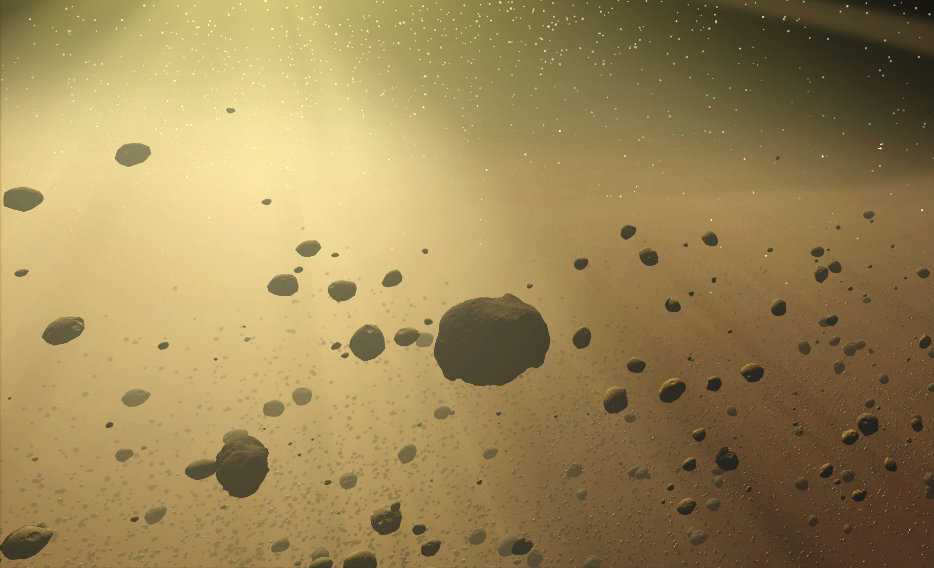Press Release
APL Scientist Detects Ice on an Asteroid
Fri, 04/30/2010 - 14:33
A Johns Hopkins Applied Physics Laboratory scientist is shattering theories that asteroids are just barren chunks of space rock.
In the April 29 issue of the journal Nature, Andy Rivkin of APL and Joshua Emery of the University of Tennessee report the first detection of both water ice and organic materials on an asteroid’s surface. Their observations of asteroid 24 Themis — one of the largest main-belt asteroids, orbiting between Mars and Jupiter — suggest that asteroids might have played a larger role in forming Earth’s oceans than previously thought.
“Current models suggest the Earth formed with very little water,” Rivkin says. “This finding not only tells us more about the conditions when the solar system formed, but means that asteroidal impacts early in solar system history may have brought a significant amount of water to the Earth.”
Observing Themis seven times between 2002 and 2008 from the NASA Infrared Telescope Facility in Hawaii, Rivkin and Emery noticed signatures of an extremely thin layer of frost, mixed with carbon-based materials.
Themis has attracted attention from astronomers because several smaller members of its family have been identified as “main-belt comets,” with dust tails presumably driven by the sublimation of water ice. Hydrated minerals have been identified on asteroid surfaces and distant asteroids have been suggested as a source of water on the Earth, but this marks the first direct detection of asteroidal water.
It had been thought that ice could have been present inside asteroids early in solar system history but that warming internal temperatures would have eventually melted the ice, with the resulting water reacting with rock. “It’s difficult to regenerate the ice after that, so the presence of ice implies it never melted in the first place,” Rivkin says.
Rivkin says prior searches for organics — like those seen in the comas of comets and in meteorites — had come up empty on asteroids. Scientists speculated that exposure to the solar wind or micrometeorites could destroy organics on an asteroid’s surface, especially as it speeds closer to the Sun — yet Rivkin’s observations defy those theories as well.
Read more about the paper here.
